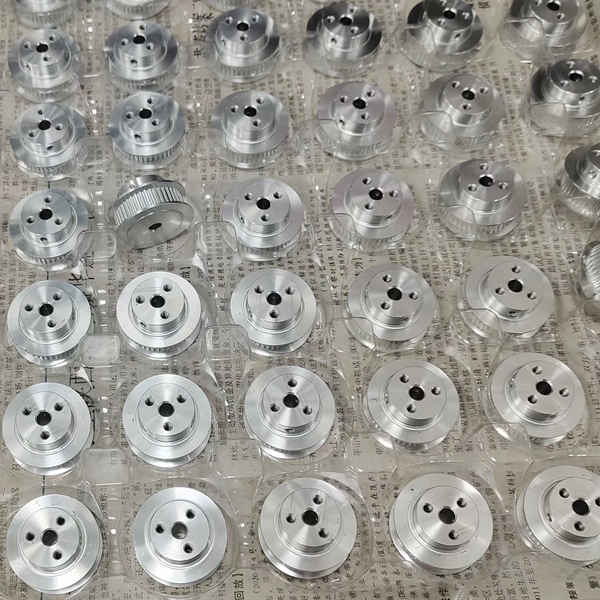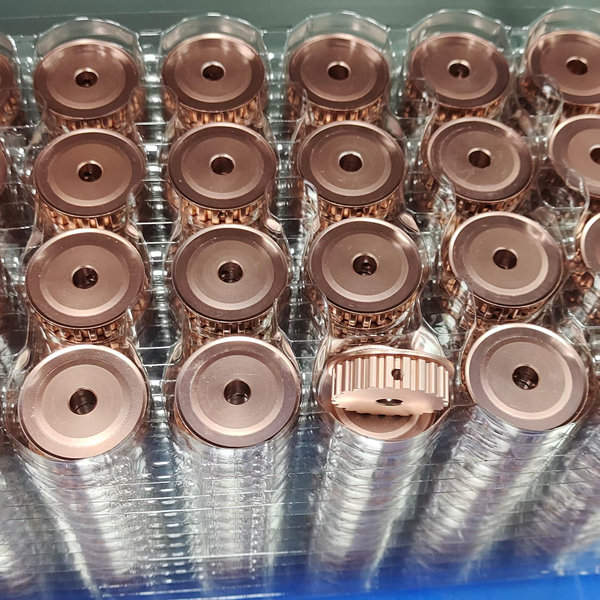Create by Falcon MFG Engineering Team 2025/03/30
High volume machining is the backbone of industries requiring mass production of intricate, high-tolerance components. From automotive systems to medical devices, this process combines advanced technology, material expertise, and automation to deliver consistency at scale. In this guide, we’ll explore how high volume machining works, its applications across industries, and how Falcon CNC Machining ensures quality and affordability for large-scale projects.
What Is High Volume Machining?
High volume machining refers to the production of thousands to millions of identical parts using automated, precision-driven processes like CNC turning, milling, and Swiss screw machining. Unlike low-volume prototyping, this method prioritizes speed, repeatability, and cost-efficiency while maintaining tight tolerances (e.g., ±0.002mm for small components)27. Key technologies include CNC lathes, rotary transfer machines (hydromats), and multi-axis systems, which reduce human intervention and minimize defects.

The High Volume Machining Process
1. Design & Tooling
CAD/CAM software translates part designs into machine instructions. Custom tooling, such as hardened steel molds or Swiss CNC guides, is fabricated to ensure dimensional accuracy.
2. Material Preparation
Raw materials (e.g., aluminum, stainless steel) are cut into blanks or bars for automated feeding. For example, CNC lathes process bars up to 2,500mm long with diameters ≤200mm.
3. Automated Machining
CNC machines execute programmed operations—drilling, milling, turning—using robotic arms or rotary transfer systems. Hydromats, for instance, produce over 100,000 parts per order with minimal downtime.
4. Quality Control
In-line inspection tools like 3D scanners and coordinate measuring machines (CMMs) verify tolerances. Falcon CNC employs SPC (Statistical Process Control) to monitor consistency.
5. Post-Processing
Secondary services (e.g., deburring, anodizing) enhance functionality. Companies like Pingel CNC offer robotic welding and tumbling for seamless finishes.
Typical High Volume Machined Components
Hydraulic Manifolds: Precision-machined to manage fluid flow in heavy machinery.
Medical Device Housings: Stainless steel enclosures for MRI machines or surgical tools.
Automotive Fasteners: High-strength bolts and connectors produced via Swiss CNC turning.
Electronics Heat Sinks: Aluminum components with complex geometries for thermal management.
Agricultural Machinery Parts: Durable cast iron or steel components for plows and harvesters.

Materials for High Volume Machining
Aluminum: Lightweight and corrosion-resistant, ideal for automotive and electronics (e.g., A380 alloy).
Stainless Steel: Used in medical and food processing due to hygiene and durability.
Brass: Excellent machinability for plumbing and electrical connectors.
Titanium: High strength-to-weight ratio for aerospace-excluded industries like motorsports.
Engineering Plastics (POM): Low-friction components for industrial automation.
Industry Applications
Automotive: Transmission housings, EV battery trays.
Medical: Surgical instrument handles, imaging machine components.
Consumer Electronics: Smartphone frames, laptop enclosures.
Agriculture: Tractor parts, irrigation system valves.
Industrial Machinery: Pump housings, conveyor system gears.
Renewable Energy: Wind turbine shafts, solar panel brackets.
Hydraulics: Valve bodies, manifold blocks.
High Volume Machining Capabilities
Falcon CNC Machining comply with GlobalSpec Production Machining Guide:
Swiss CNC Turning: For small, complex parts (≤1.25” diameter) with tolerances ±0.005mm.
Multi-Axis Milling: 5-axis machines produce intricate geometries in a single setup.
Rotary Transfer Machining: Hydromats deliver outputs exceeding 1.7 million parts weekly.
In-House Tooling: Custom molds and fixtures reduce lead times by 30%.
Lean Manufacturing: Cellular production lines minimize waste and optimize workflow.
7 Expert Tips for Optimizing High Volume Machining
Standardize Designs: Simplify geometries to reduce tooling changes and cycle times.
Leverage Automation: Robotic material handling ensures 24/7 production without downtime.
Select Cost-Effective Materials: Use aluminum or brass for high-speed machining to lower wear on tools.
Optimize Tolerances: Loosen non-critical tolerances to reduce machining time by 15–20%.
Implement SPC: Monitor process stability with real-time data to prevent defects.
Use Modular Tooling: Quick-change fixtures allow faster transitions between batches.
Partner for Scalability: Choose manufacturers with blanket order programs for inventory management.
5 Factors When Choosing a High Volume Machining Partner
Certifications: ISO 9001 or IATF 16949 compliance ensures quality standards. learn more about ISO Certification Standards
Equipment Capacity: Verify spindle counts (e.g., 270+ spindles for mass production).
Material Expertise: Ensure experience with alloys specific to your industry.
Lead Time Flexibility: Facilities with 3-shift operations expedite delivery.
Value-Added Services: Look for suppliers offering finishing, assembly, or inventory stocking.
Why Choose Falcon CNC Machining?
20+ Years of Expertise: Proven track record in automotive, medical, and renewable energy sectors.
State-of-the-Art Facilities: 50,000 sq. ft. plant with 5-axis mills and Swiss CNC lathes.
Cost Efficiency: In-house tooling and lean processes reduce costs by 20%.
Rapid Turnaround: Automated systems enable 1–2 week lead times for orders up to 10,000 units.
Global Reach: Seamless logistics to North America, Europe, and Asia.
Internal Link: Explore our CNC machining services for high-precision components.
Start your high-volume project today—request a quote within 24 hours!
High Volume Machining FAQs
Q1: How does high volume machining reduce per-unit costs?
A: Bulk material purchasing, automated processes, and reduced setup times lower expenses by 30–50%.
Q2: What materials are unsuitable for high volume machining?
A: Brittle ceramics or ultra-hard metals (e.g., tungsten) may cause excessive tool wear.
Q3: Can high volume machining handle tight deadlines?
A: Yes. Facilities like Pingel CNC offer expedited services with 1–2 week turnarounds.
Q4: How do you ensure consistency in large batches?
A: In-line CMMs and SPC systems monitor every 10th part for deviations.
Q5: Are secondary finishes available?
A: Falcon provides anodizing, powder coating, and electropolishing for corrosion resistance.